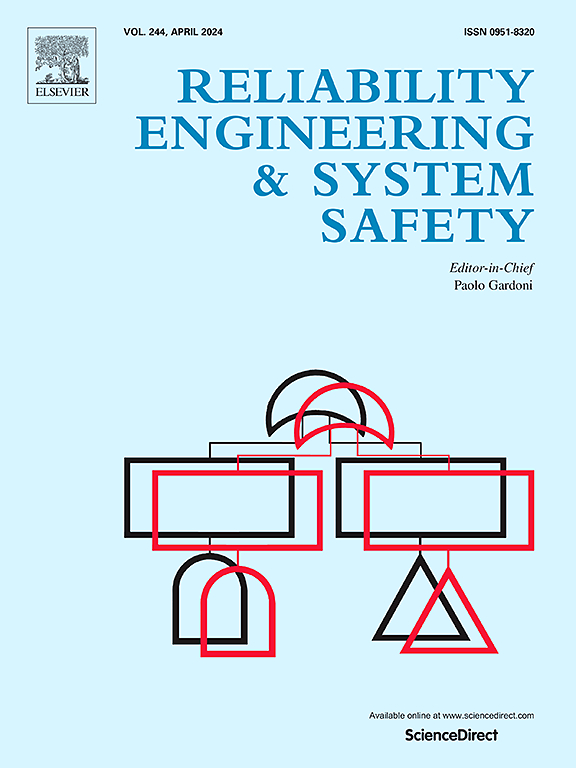Global assessment modeling to reveal spatiotemporal variations and socioenvironmental drivers in drainage system flood-resilient performance
IF 9.4
1区 工程技术
Q1 ENGINEERING, INDUSTRIAL
引用次数: 0
Abstract
Flood resilience has received considerable attention from urban areas experiencing intense rainstorms due to urbanization and climate change. Preevent assessments and measures can facilitate the resilience performance of urban drainage infrastructure. Current resilience studies predominantly evaluate a single fixed scenario without exploring the spatiotemporal dynamic process and its underlying drivers. Here, a synthetic assessment model is developed to systematically evaluate the spatiotemporal dynamics of urban drainage system (UDS) resilience via a targeted failure pattern approach coupled with a component degradation model to identify resilience-sensitive pipe segments and provide quantitative simulation evaluations of global resilience performance at spatiotemporal scales. The Mantel test reveals the spatial correlation between pipeline sensitivity performance and socioenvironmental factors and identifies key indicators. We find that spatial failure patterns reduce system resilience more than component deterioration over time does. The resilience-sensitivity performance of pipes exhibits a significant spatial relationship with two indicators (i.e., nighttime light and population density). Subcatchment flooding-vulnerable performance is thus proven to be more sensitive to localized changes in two socioenvironmental drivers. This study provides a comprehensive framework for evaluating the spatiotemporal dynamics of urban drainage system resilience, which enables decision-makers to pinpoint priority zones where the deployment of flood mitigation strategies would be optimally effective.
求助全文
约1分钟内获得全文
求助全文
来源期刊

Reliability Engineering & System Safety
管理科学-工程:工业
CiteScore
15.20
自引率
39.50%
发文量
621
审稿时长
67 days
期刊介绍:
Elsevier publishes Reliability Engineering & System Safety in association with the European Safety and Reliability Association and the Safety Engineering and Risk Analysis Division. The international journal is devoted to developing and applying methods to enhance the safety and reliability of complex technological systems, like nuclear power plants, chemical plants, hazardous waste facilities, space systems, offshore and maritime systems, transportation systems, constructed infrastructure, and manufacturing plants. The journal normally publishes only articles that involve the analysis of substantive problems related to the reliability of complex systems or present techniques and/or theoretical results that have a discernable relationship to the solution of such problems. An important aim is to balance academic material and practical applications.
 求助内容:
求助内容: 应助结果提醒方式:
应助结果提醒方式:


